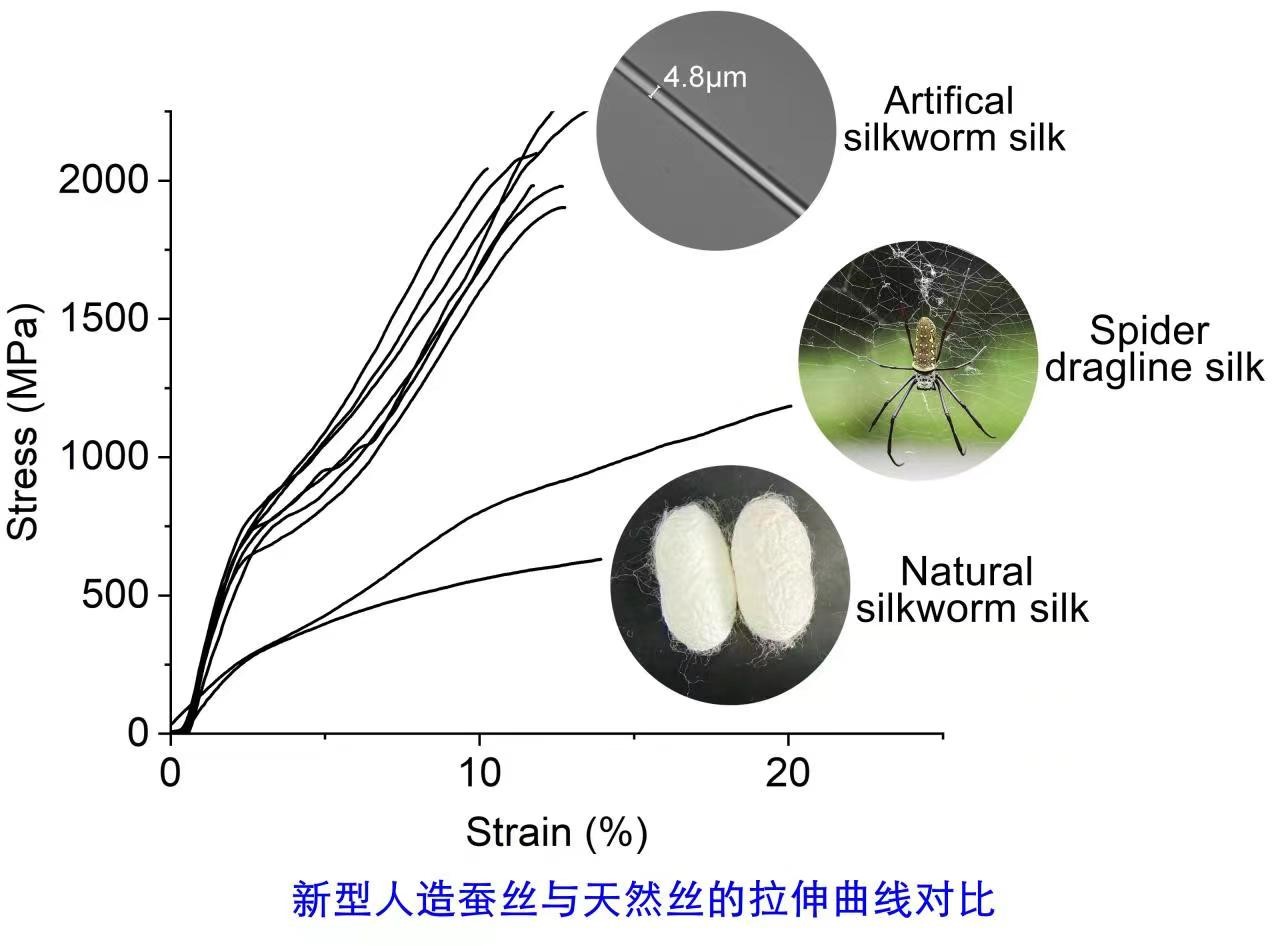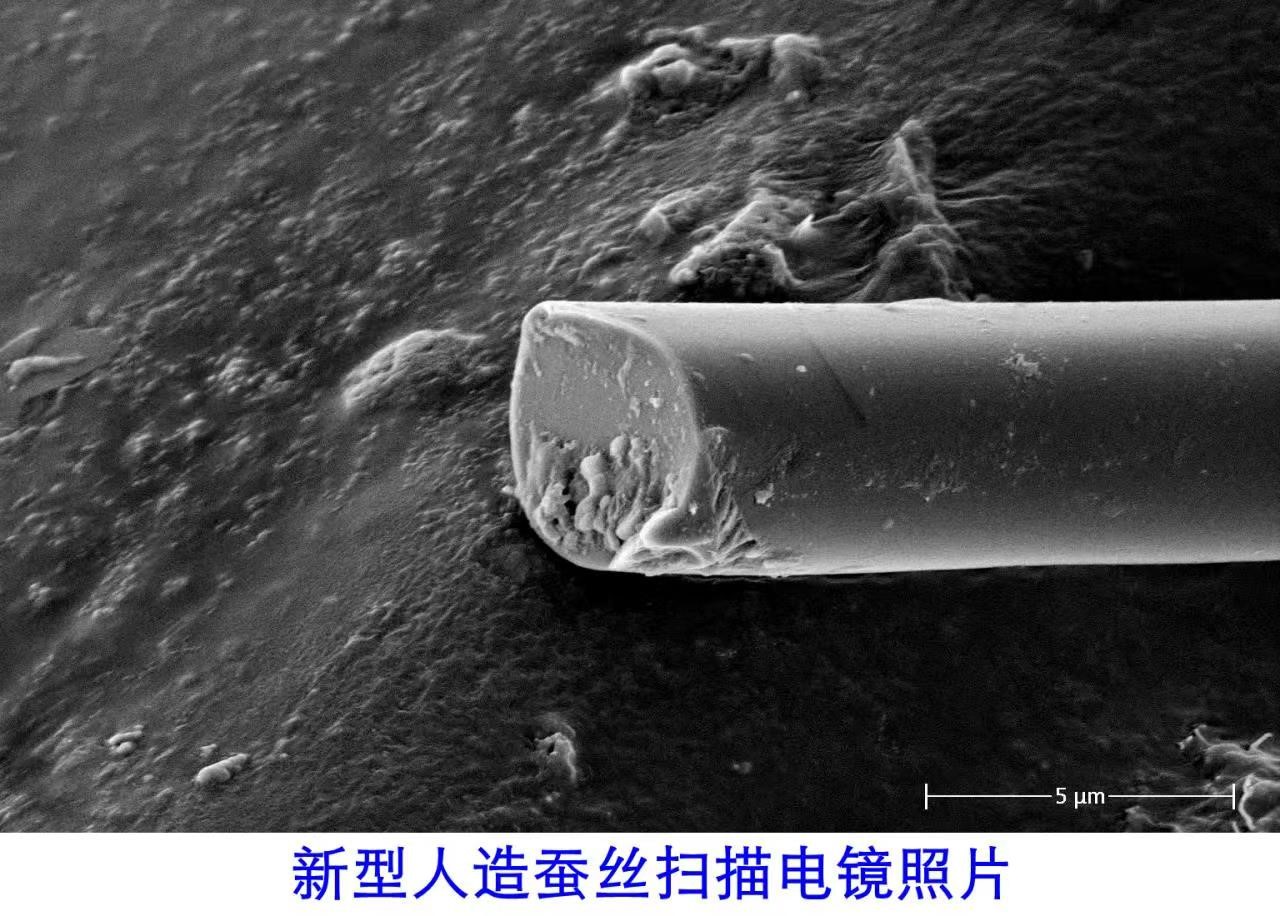Recently, a research group led by Professor Lin Zhi from the School of Life Sciences at Tianjin University worked out a new strategy for developing artificial superstrong silkworm silk, converting accessible silkworm fibers into silk of superior strength.

The research result has been published in Matter, a renowned international materials science journal.
The natural silks exhibit various physical properties. Spider dragline silk is the strongest natural protein fiber known so far, with its strength five to ten times that of steel of the same mass. Difficulty in harvesting it from spiders, however, prevents its large-scale production and applications. Compared with spider silk, silkworm silk, having been used by humans since ancient times, is far less strong and tensile. Although the academic community has been working on producing stronger threads out of the natural silk for years, most outcomes are not satisfactory.

In this case, the latest discovery sheds light on the artificial silk spinning method. “Silk fibroin is a natural fibrous protein with high molecular weights (MWs) extracted from silk,” said Professor Lin, “compared to the heavily degraded protein, intact molecular chains of high-MW silk fibroin could improve the strength of fiber.” Before manually spinning the silk, Lin’s research group chose SDS and Na2CO3 to remove a sticky outer layer of silkworm silk, resulting in degumming ratios of around 28% and high MWs of regenerated silk fibroins (RSF), which contributed to preserving their mechanical properties. Then the concentrated RSF was extruded like toothpaste from microtubes before rapidly solidifying into thin fibers in a coagulation bath containing two metal ions Zn2+and Fe3+. Surprisingly, the post-treated fibers with diameters similar to those of spider dragline silk turn out to be significantly stronger and stiffer than natural dragline silk. The tensile strength of this artificial silk is more than 70% higher than the average tenacity of spider silks. All these excellent mechanical behaviors add to a promising future of the emerging artificial superstrong silkworm silk.
“This research opens up a convenient and efficient way to produce artificial silks with desirable properties,” Lin suggested, “providing a sound technical basis for the large-scale production of silk textiles with high performance.”
By: Mo Jingwen
Editor: Qin Mian






